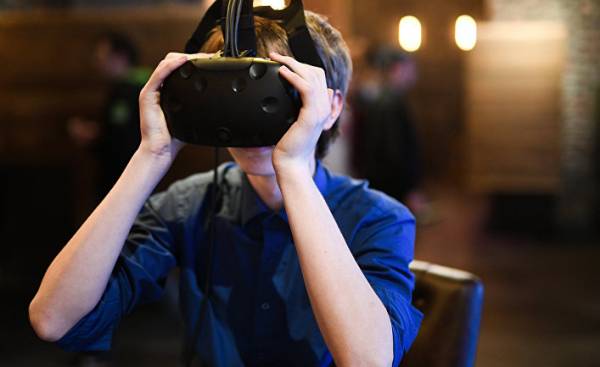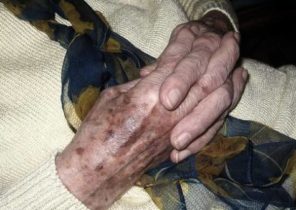
We all sleep less. A resident of North America in the early twentieth century slept an average of 10 hours a day, twenty years ago — eight, now — no more than six and a half. Jonathan Crary (Jonathan Crary) in his book “Late capitalism and the end of the dream” tells about the project of the Ministry of defense, in which scientists for several years studying the brain bald zonotrichia — species of birds that can stay awake for seven consecutive days. The data obtained will apply to people: the us army wants to create a soldier who will be able to function many days without sleep.
Insomnia in modern times
Sleep has become the enemy of not only us army, but also for the entire economy — because it has to do completely irrational from an economic point of view, the pause in production and consumption. At the turn of XX and XXI centuries the Russian-European space consortium announced that he was going to launch into orbit satellites which would reflect sunlight and direct it to the Ground. Each satellite is planned to be equipped with folding reflectors with a thick sheet of paper, each of which is able to cover a land area of 26 square kilometers. Advertising slogan of the project was: “White day all night”. Initially it was only the illumination of territories, where there is polar night, however, came the idea to highlight some of the city.
Crary describes in his book the way of functioning of the modern world, the meaning of which can be reduced to a short formula “24/7”. The goal is to “fit human life into the model non-stop activities, in which there are no pauses”.
Voluntarily depriving the body of sleep, or falling by itself, we are one of the most brutal torture present in the Arsenal of the security agencies of totalitarian States. For the first time “on stream” it put the NKVD in the Soviet Union. Aleksandr Solzhenitsyn tells in his book “the GULAG Archipelago” as prisoners, which could not be broken by any other means, placed in a brightly lit chamber, and awakened when they managed at least momentarily to sleep. After a few days they became so weak and helpless that no resistance was signed at the most incredible charges. Short-term lack of sleep triggers the development of psychosis, longer — irreversible neurological disorder. Laboratory rats deprived of sleep survive for more than three weeks.
And all promised to be quite different. In many utopian novels written in the nineteenth and the first half of the XX century, appeared the image of the world in which this technology machine will begin to do for man work, and he will get time for entertainment, recreation, development of own Hobbies and interests. Economist John Maynard Keynes (John Maynard Keynes) predicted in written in 1930 work, “Economic possibilities for our grandchildren” that future generations will face one main problem: how to reasonably use the excess of free time. In a sense, what happened: technological progress has allowed us to partially free themselves from domestic chores. Washing machine, vacuum cleaner, food processor and many other devices of this kind will save a lot of time. Thanks to cars, high speed trains and planes our trips last much less than a hundred or two hundred years ago. But where is this saved time?
In the image and likeness of the machine
One answer, perhaps, is that the technique, becoming an important element of our life, people impose their own logic and way of functioning. Who lived at the turn of the XIX and XX centuries, the Belgian artist and architect Henri van de Velde (Henry van de Velde) wrote: “I love cars, they are like creatures of the highest order. The mind is freed from all sufferings and joys inherent in the human body in its active and fatigued. Machine on their marble pedestals behave like Buddha sitting cross-legged on the eternal Lotus and indulging in contemplation. They disappear when born more beautiful and perfect than they are.”
Perfection of technical devices makes a man tormented by remorse. Machines do not tire, do not hesitate, have no such doubts. When there is a new model with greater performance, they are inferior to her. This is a perfect example of the modern worker and consumer. They do not create problems, their behavior is predictable and completely subordinated to the idea of performance and control.
The result of the subordination of our lives to the logic of technology with her desire to raise the efficiency of all actions and processes has become a phenomenon that American economist Nicholas Georgescu-Regen (Nicolas Georgescu-Roegen) has called a “vicious circle razor”. “I shave faster, to make time for developing a machine with which I can shave faster, to…” it Turns out that people spend a huge amount of time just to save in the future.
To get out of this vicious circle is impossible. There is no such device that would work even better. Subordinating life to the logic of technology, we deprive ourselves of the possibility to reach the moment when we are fully satisfied with their living conditions and efficiency of the surrounding devices. Thus was born civilization impatient, which said economist and political scientist Jeremy Rifkin (Jeremy Rifkin). “Every new technology that objectively allows us to save time, simultaneously accelerates the pace of our lives. We have more work, not leisure. (…) We fall into despair, when the computer does not respond to our command in three seconds, we demand the immediate result, but otherwise fall into a rage”, he wrote.
Lie looks authentic truth
The development of technology has accelerated the evolution of the phenomena that accompanied our civilization for at least the past one hundred and fifty years. One of the most important of them (not only in culture but also in everyday life) was the blurring of the boundaries between reality and fiction. Now this phenomenon manifests itself due to a massive attack of the virtual reality world of avatars, social networking, creation of emotions, feelings, and even facts (now gaining popularity the concept of “postprod”).
However, technology is only a tool, necessary but not sufficient condition for the outbreak of the crisis reality. The Genesis of this process can be traced on an example of creativity, life, and, most importantly, the posthumous fame of Vincent van Gogh. If you measure the popularity of the artist with his presence in extra-cultural contexts, van Gogh can be called the most famous artist of all time. His name appears in the names of banking organizations of Shanghai and Singapore, on the label of gin and vodka, and reproductions of his paintings can be seen not only in advertising, but even on the coasters under mugs or jewelry. The phenomenon of van Gogh shows that he has become for the modern world, not just artist from the past, and a symbol that plays a critical role in the understanding of our time.
In his painting, the artist refused to copy nature, objective display of reality, seeking, rather, to show your own emotions and state of mind. The author of the first biography of van Gogh, Julius Meier-Graefe (Julius Meier-Graefe) wrote: “Watch how it works, it was scary. He squeezed paint as blood, merged with the depicted object, put yourself in the angry clouds, where thousands of Suns threatened to destroy the Earth, in the trees, horrified, calling out to the sky, in a desperate solitude of the fields.”
Van Gogh deliberately distorted objects, changing their appearance, departed from, as he said, “stereoscopic reality”, if it allowed him to Express himself. In a letter to his brother Theo he writes: “I dream to learn to tamper with, to process, to change the reality to become, shall we say, a lie, but a lie is more truthful than truth”.
In van Gogh’s work for the first time so we could clearly see a clash between the “photographic” image of reality and what it appears to the inner eye of the artist. His background fueled the tragic biography: poverty, rejection by his contemporaries, stay in a psychiatric hospital and, finally, suicide. Prices of van Gogh paintings began to grow in the early twentieth century, about 10 years after his death. They soon reached an incredible for those times, heights, and paintings of the artist became the most reliable way of investing in the era of the great depression.
In the 1920s, out of nowhere appeared a German dancer Otto Wacker (Otto Wacker), who stated that he owns a couple of dozen unknown works of the Dutch painter. Van Gogh left no list of his paintings, so first the authenticity of the paintings that sold Waker, no one questioned. On the contrary: the story just enveloped the author of “Sunflowers” an additional aura of mystery and fueled the demand for his works. All failed, while one expert accused the Waker in that picture, which he sells, does not belong to the brush of van Gogh.
Thus began the most famous trial in the history of the Weimar Republic. Correspondents of Newspapers from around the world gathered to see how the courtroom turned into an art gallery. However, the investigation quickly stalled. Next, experts who were brought in the judge, could not agree about the authenticity of the paintings. The satirical magazine Die Weltbühne was advised to resolve the issue, leaving bones to save art from the torment.
The result of the process was that van Gogh had forged himself, the fault lies with him, not Otto Wacker. Dutch artist aspiring to inner truth, is so far departed from the reality around him, shifted to the side of lies and distorted the image of the world that it became impossible to establish even the authenticity of his works. The story of van Gogh and Wacker showed how lost the balance between the real world and its subjective perception of a specific person. The path to the triumph of virtual reality over reality was opened.
The world of the play
In order to correctly assess their situation, should look back or look forward. Dukaj Jacek (Jacek Dukaj) in his futuristic novel “Path of resistance” depicts humanity, impassioned self-improvement, changing your personality and appearance, which can be revised by “revision DNA.”
It is a reality over which man had full control. The subjective perception of the world is now you can not only transfer to the canvas as did van Gogh: technology, genetics and the Internet, people received an opportunity to create your own world. Real life (“manure”, as he calls it Duci) is not real, it does not give strong feelings and offers many opportunities for modification yourself. (“Our sense organs — is a weak shadow of reality”). Virtual life is divided into two spheres: the “private soul”, which do not have access to other people, and “public”. “Come with me, touch my skin feel my life! (…) Everyone can enter the public soul of any person (How many people live inside of me?)”, says the narrator of “Path of resistance”.
Work Duka only develops those tendencies which are traced in the current situation. In the late 1990-ies appeared the first so-called public virtual world platform Active Worlds or Second Life. Users have complete freedom in creating their avatars (virtual images): they can alter their appearance, gender, appearance, and simultaneously shaping the surrounding reality of its counterparts. In the following decade began to speak not so much about “virtual” as “augmented reality” (augmented reality).
Virtual world using smartphones and social networking has become an integral part of our lives, turning from an innocent play on one of the online platforms in important aspect of everyday life. This is another reason why the development of technology has given us rest; we disappoint our hope that we will get more time for rest and entertainment.
As he writes in his work “Homo Ludens” Johan Huizinga (Johan Huizinga), the game has nothing to do with obligation, coercion or objectives. This “fake” life, flowing in a specially designated space and time that is not associated with the routine and not due to material interests or deliver the benefit. The game is the culture itself becomes her only when it is disinterested. Technology has deprived us of the game, which was originally made by the use of virtual reality. So we spend our free time in the same ordinary world in which we are working or doing their daily chores.
We live in a world whose image is sharpened with the help of virtual technology. In a world where we manage fictional characters — their images on social networks, doing it constantly, not only in your free time.
The Wales Institute of social and economic research, data and methods (WISERD), found that every fifth representative of young generation wakes up at night to send a message or to read the news in Facebook, Twitter, Snapchat and similar services. This world becomes more intense (“is technology making us more human”), but at the same time detached from reality.
“All that before was experienced directly, into a representation” — wrote in his work “the society of the spectacle” by French thinker guy Debord (Guy Debord). Although he expressed this idea in 1967, and today, in the era of augmented and virtual reality, it became a lot more relevant than half a century ago.







